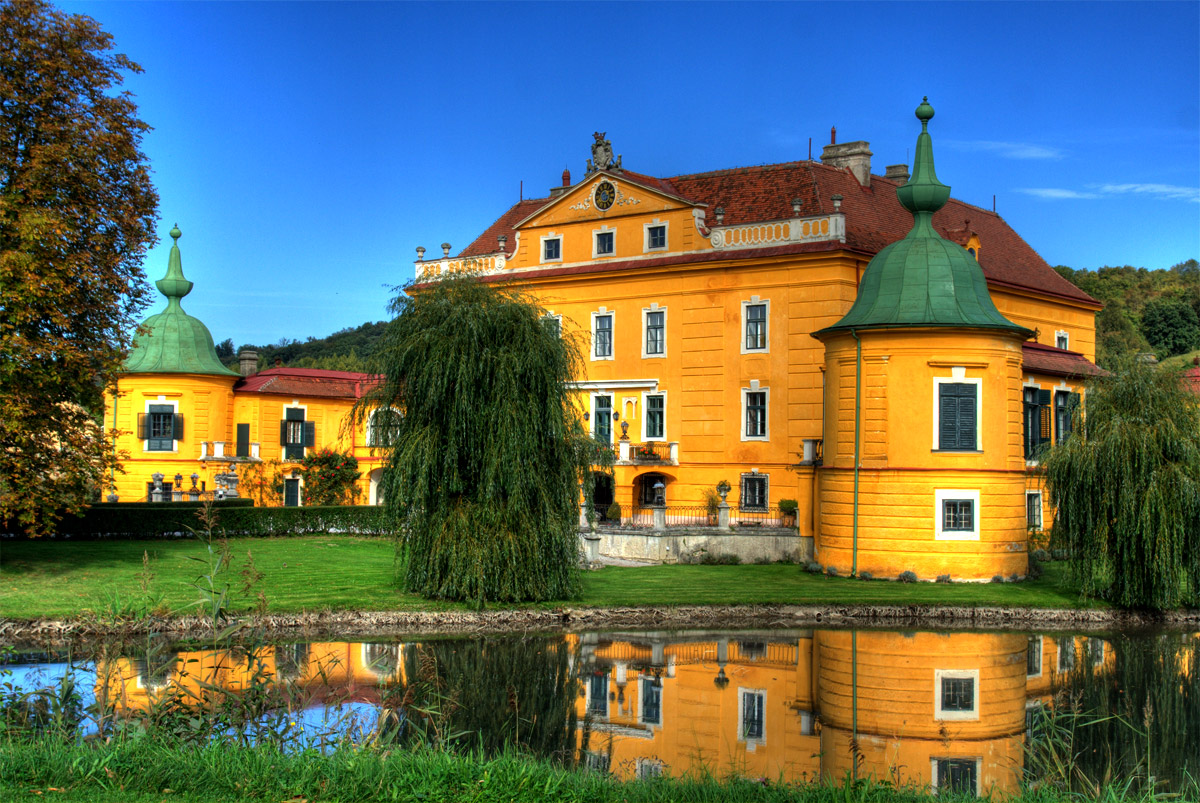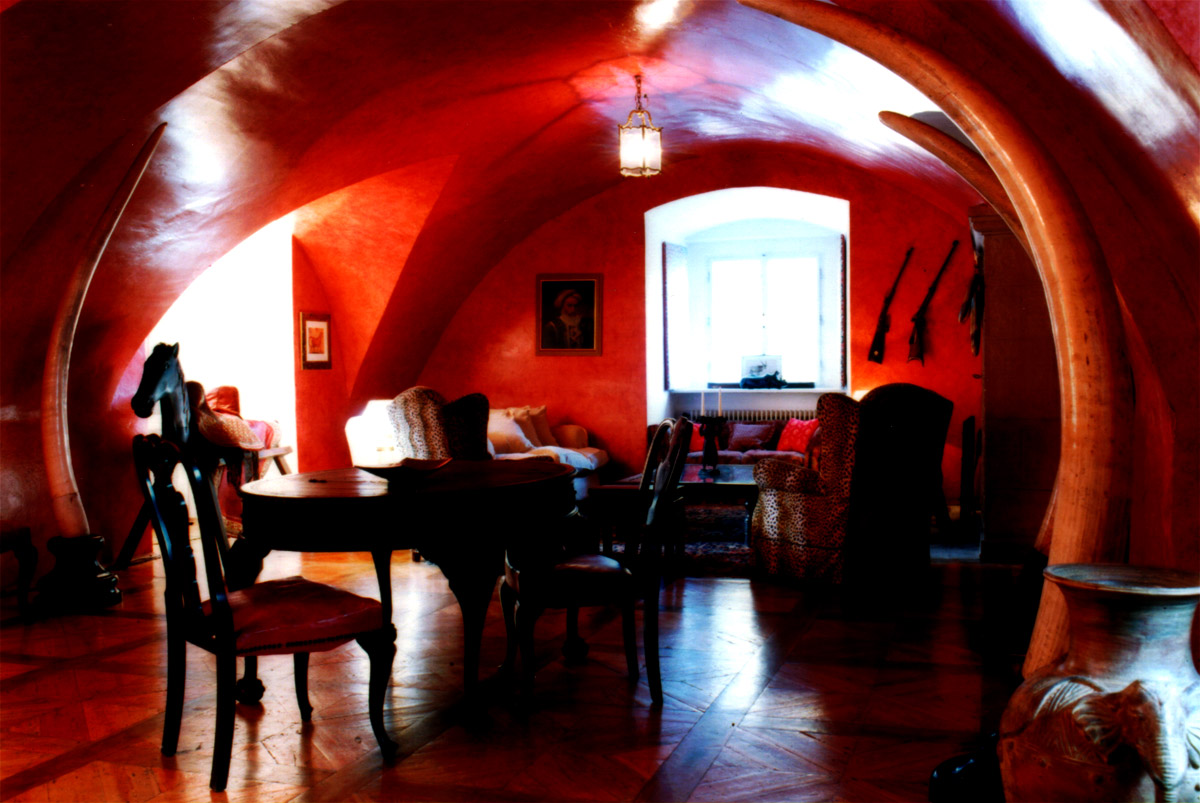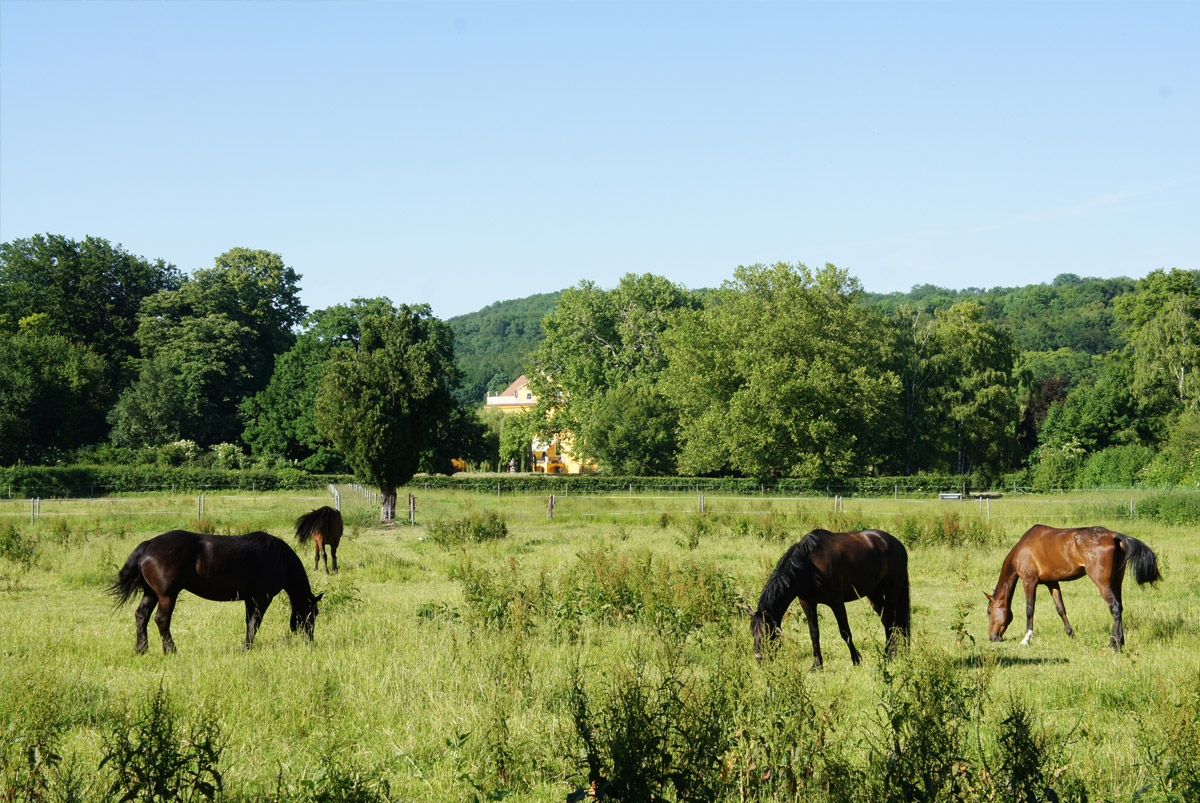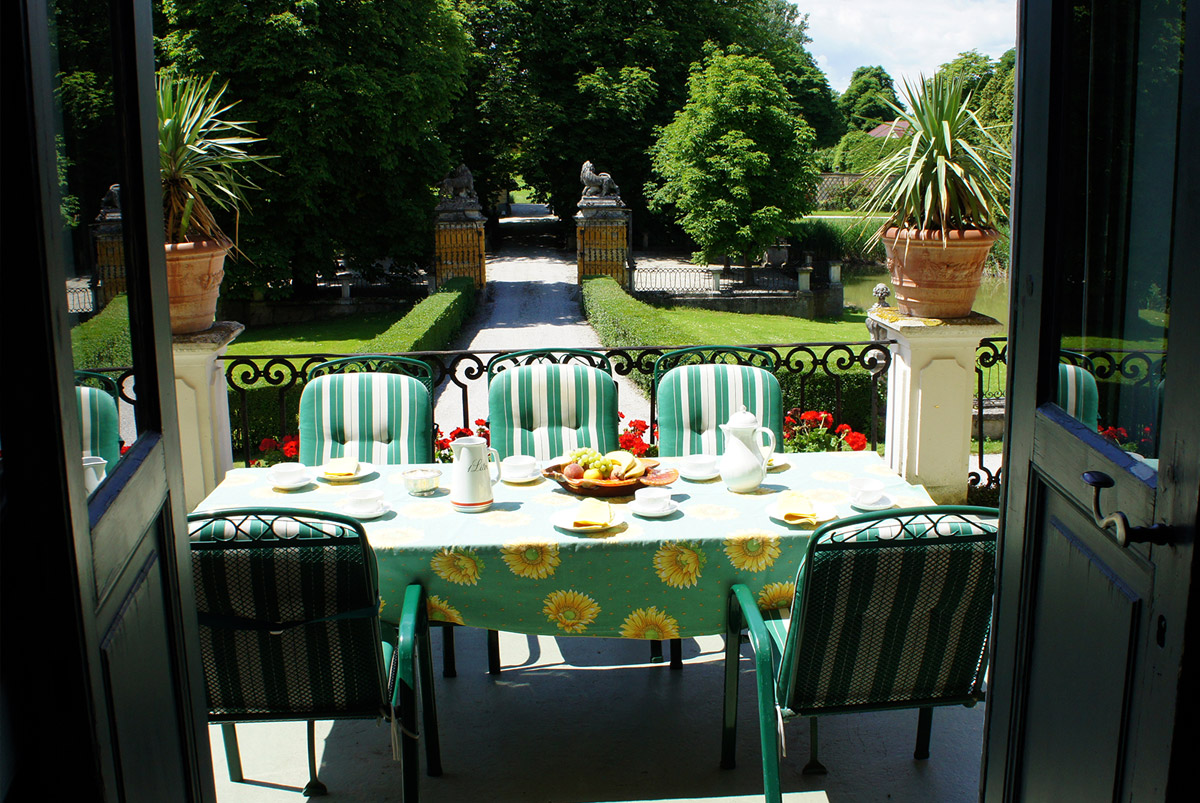Welcome to castle Wasserburg in Austria!
he castle Wasserburg is situated 45 km west of Vienna, the capital of Austria. Nearby is the Danube valley Wachau, with its famous vineyards, monasteries, castles and small old villages - one of the most beautiful parts of the country and perfect for sightseeing tours. The history of the castle of Wasserburg goes back as far as the 12th century. Today it presents itself as a romantic baroque castle surrounded by a lovely pond -once the moat inhabited by all kinds of ducks and other waterbirds as well as lots of fish. Thoroughbred horses graze in paddocks
in the historical park in the shade of enormous old trees and you will find many romantic spots for picnics. There is a luxurious outdoor pool (22 x 14m) a pool house and a tenniscourt (sand) set in a historical rock garden. For golf players there are several excellent golf courses in the vicinity.
The castle sleeps 20 ( on request up to 26 ). There are 10 bedrooms( on request up to 13 ), 4 double with bathroom en suite, 6 doubles with 3 bathrooms to share.
The rooms are spacious and very comfortable, decorated in english country style. On the ground floor you will find a small entrance hall, a great hall with an open fireplace, vestibule,a small salon, and a sauna. The first floor of the castle: a large salon, a library with an open fireplace, a chinese dining room, a spacious kitchen and a hall for social functions. The guest rooms are on the second floor.
Rent & Availability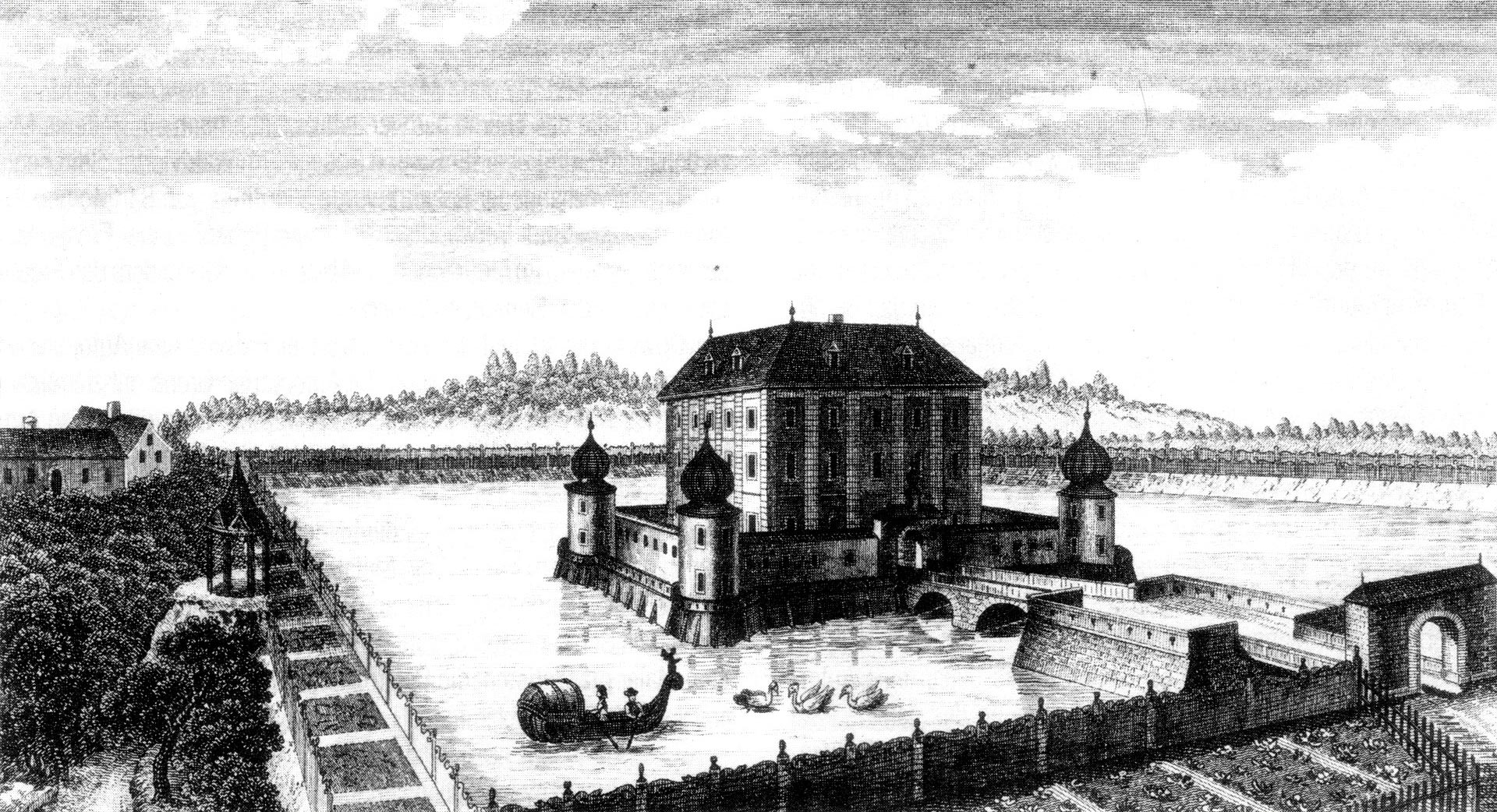
The Owners of the Wasserburg mansion
he oldest historical documents that can be found about the inhabitants of the wasserburg castle dates back to 1185. The aristocrat Dietmar von Wasserburg was the first noted owner of the estate. Until the 13th century wasserburg remained in the possession of the von Wasserburg line the most notable member being Heinrich von Wasserburg who was the brother in law of the famouse minnesinger Ulirch von Lichtenstein. Legend says that von Lichtenstein took a leading role in the liberation of King Lionheart during his Austrian imprisonment. In 1238 the nobleman Otto von Haslau took possession of Wasserburg.
A couple of years later the estate change through marriage into the possession of the aristocratic Puchberger line. In the 14th century the von Toppel family inhabitated Wasserburg but already in 1515 Christoph von Zinzendorf bought Wasserburg and incorporated it into the family’s possession of vast estates throughout the Austrian imperial lands. The Zinzendorfs used Wasserburg as their ancestral home and main family estate for more than 400 years. In 1813 Count Heinrich von Baudissin adopted the crest and the name of the departed Heinrich von Zinzendorf .
Count Baudissin-Zinzendorf who originally came from Holstein in Germany introduced the protestant tradition of the christmas tree to Austria, it is said that the Christmas tree of 1827 in Wasserburg was the first of its kind in the Austrian Empire. 1912 Count Baudissin-Zinzendorf sold Wasserburg to Count Heinrich Fuenfkirchen. During the Great War the castle functioned as a recreation home for soldiers from the front. In 1923 Count Carl Hugo Seilern and Aspang bought the estate and it remains until today in the possession of the Seilern-Aspang family.
